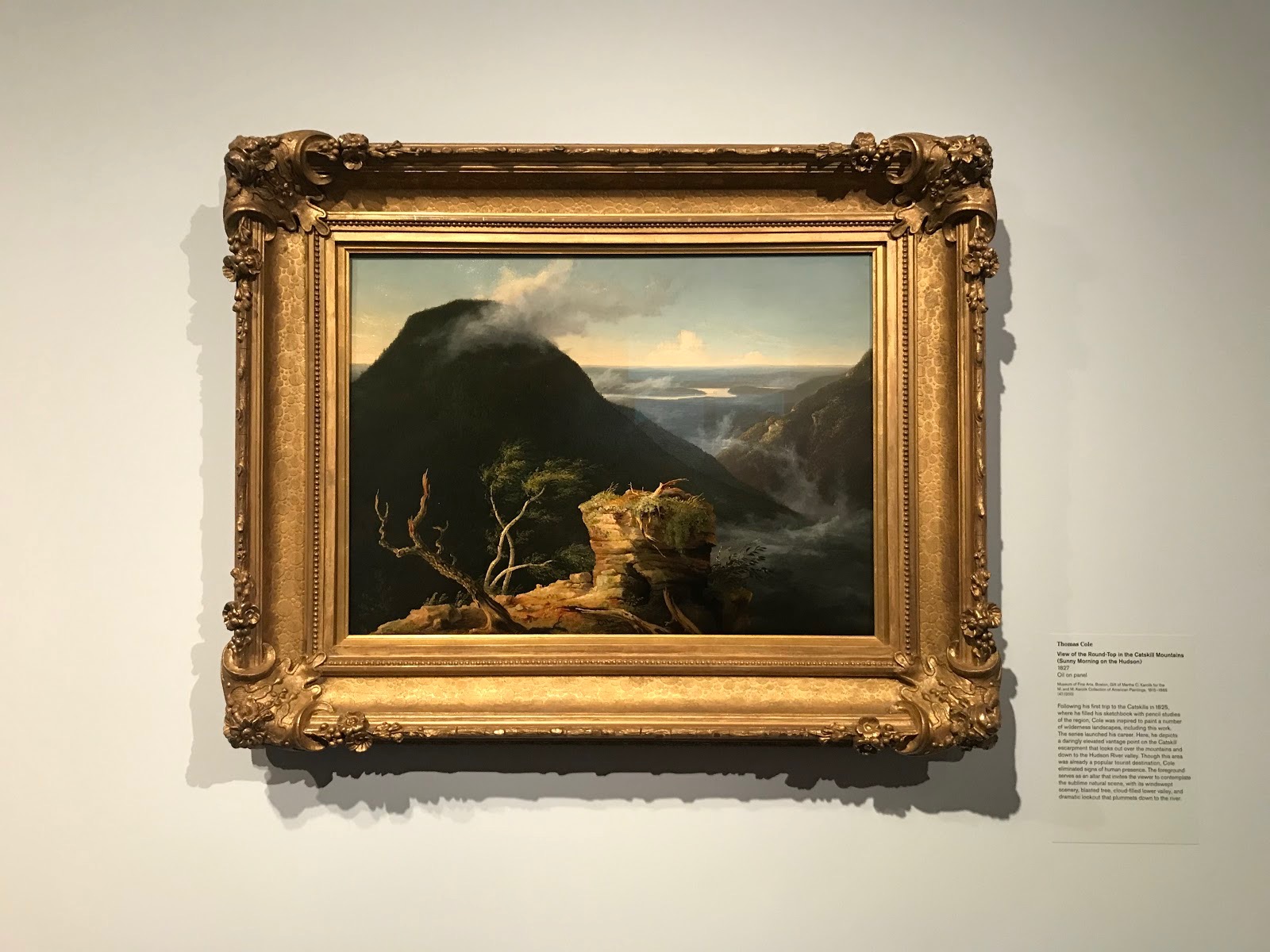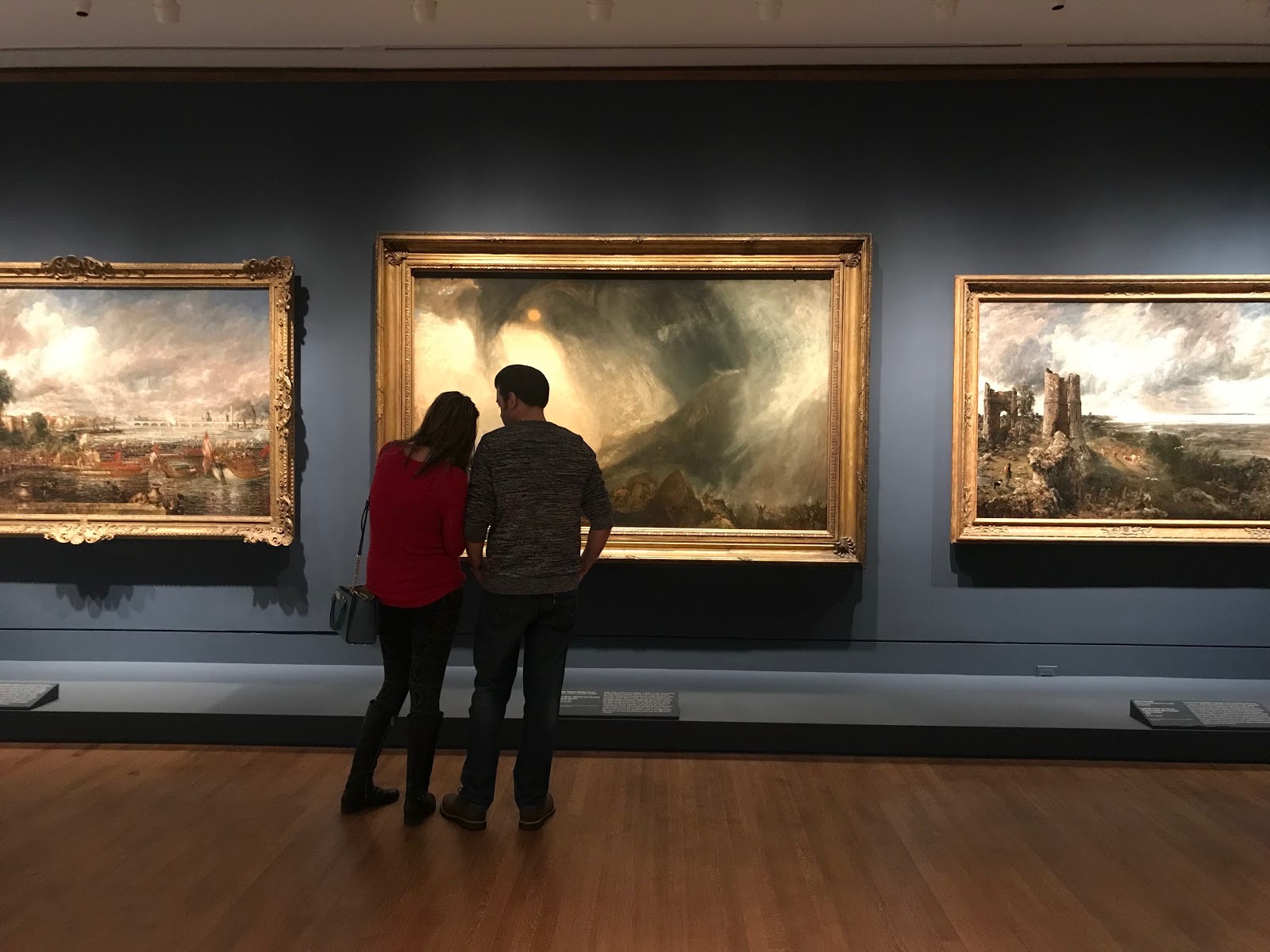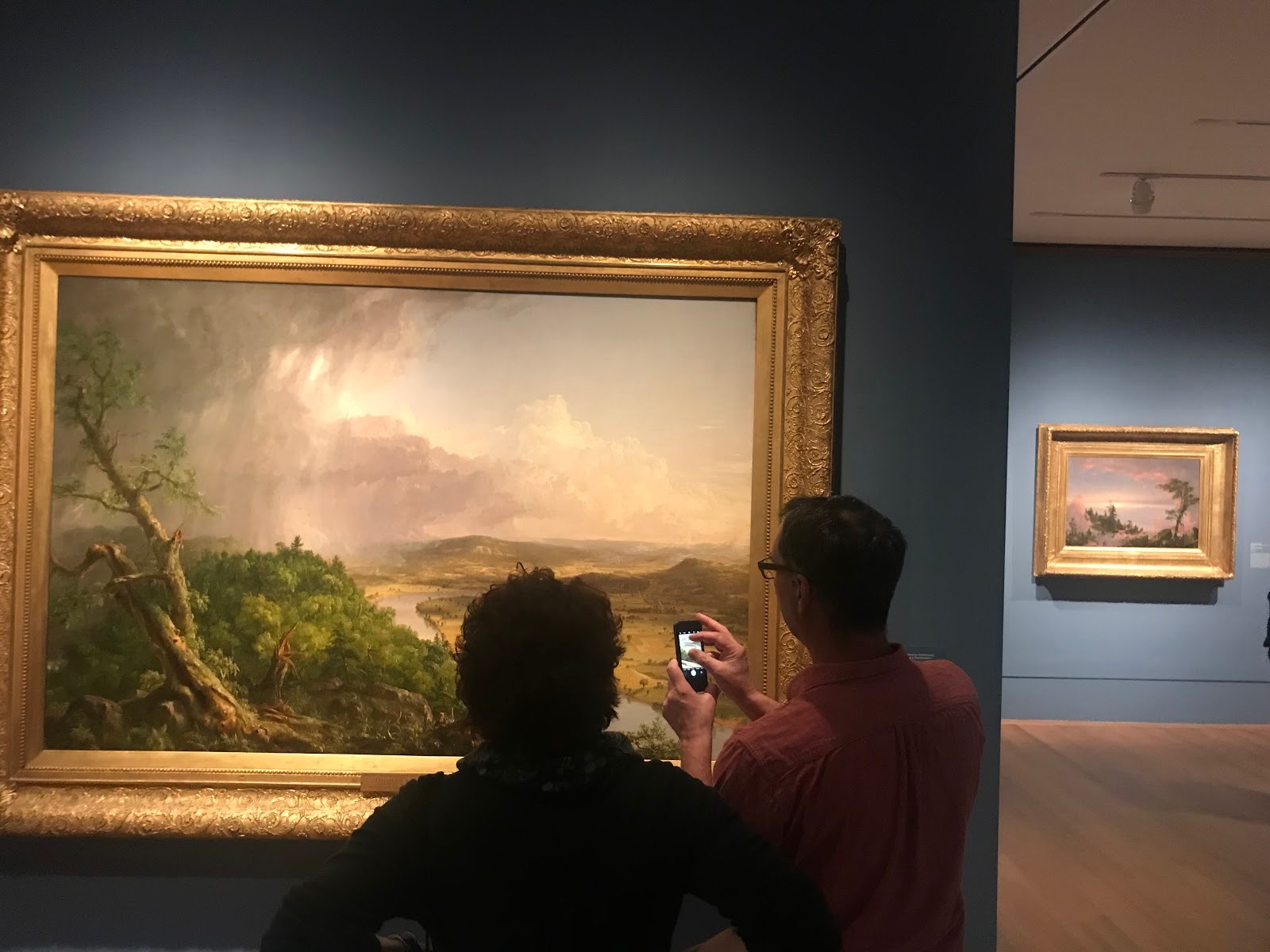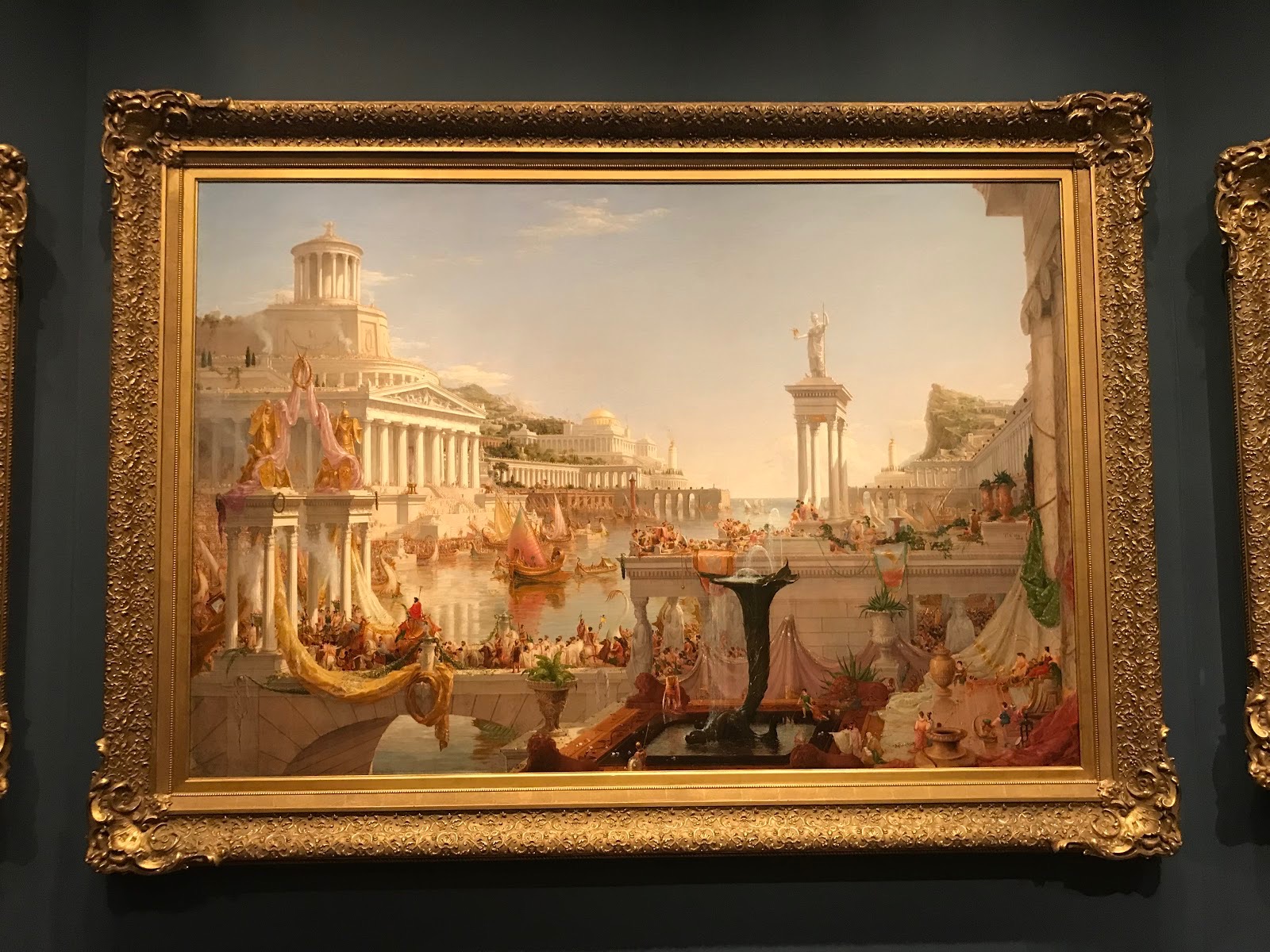The Courses Of A Lifetime: Thomas Cole Exhibit At the MET
Photos courtesy of Savannah White
The Metropolitan Museum of Art premieres an exhibition featuring one of America’s preeminent landscape painters, Thomas Cole. This exhibition marks the 200th anniversary of Cole’s first Atlantic crossing--immigrating from England to the United States in 1818. Thomas Cole’s Journey whisks the viewer on an incredible trek featuring a variety of Cole’s works including sketches, paintings and textile designs. This capsule into the past will be on display through May 13.
For the first time ever at the MET, this exhibition examines the artist’s career in relation to his European roots and travels, establishing Cole as a major figure in 19th century landscape art within a global context. Primarily self-taught, Cole realized his passion for art at the age of seventeen. Having just immigrated from England, he worked with his father’s wallpaper business in Ohio. However, he was unsatisfied. He determined to become a painter. After receiving rudimentary art instruction and borrowed textbooks, Cole took up a trip up the Hudson river and created several sketches of the Catskills of upstate New York. In the spring of 1825, he presented a daring new vision of the American wilderness.
View of the Round-Top in the Catskill Mountains (Sunny Morning on the Hudson), is one of Cole’s first paintings which launched his career. While this location was a popular tourist destination, he eliminated all signs of human presence. The foreground appears to serve as an alter. The windswept scenery, blasted trees, cloud-filled lower valley and dramatic lookout invite the viewer to contemplate the sublime natural scene.
For the first time ever at the MET, this exhibition examines the artist’s career in relation to his European roots and travels, establishing Cole as a major figure in 19th century landscape art within a global context.
He became mesmerized by the haunting beauty of the Catskills. After producing a small collection of landscape paintings, he caught his lucky break. Asher Durand, a prominent landscape painter took notice of his work and helped catapult him into the international art scene.
His fame spread across the globe. In his twenties, he was dubbed a fellow at the National Academy. Expanding his travels and subject matter, he aspired to what he termed a “higher style of landscape.” This type of work included a narrative. The subject matter often centered around biblical and literary subjects such as his work, The Garden of Eden.
Cole’s vision of the Garden of Eden illuminates the richness of nature’s bounty. Palm and banana trees and other tropical plants can be observed. This painting is a compilation of different sketches inspired from previous trips to the Caribbean and the White Mountains of New Hampshire. The mountain in the distance is adapted from a drawing of Mount Chocorua, which re-occurs in another painting titled Scene from “The Last of the Mohicans.”
Only four years after his initial success in painting the Catskills, he endeavored to take a tour of Europe. He received a large number of wealthy American commissions which continued to boost his stature and reputation.
A five painting series, The Course of Empire narrated the unavoidable, cyclical rise and fall of civilization.
However, perhaps his most impressive and renown work culminated in an ambitious historical landscape series.
The Course of Empire in 1833. A five painting series, The Course of Empire narrated the unavoidable, cyclical rise and fall of civilization. Cole intertwines experiences from his travels in Britain and Italy and melds these with American landscape imagery. Each one of the paintings depict the same imaginary mountain landscape in incredible detail. The close the viewer examines the paintings, the more details emerge.
The Savage State details a sublime, wild land with hunter-gathers chasing prey. On the second canvas, The Arcadian or Pastoral State, humanity has begun to develop. The arts and music have emerged. Agriculture and industry are are developing. In the third installment, The Consummation of Empire, Cole demonstrates the grandiose imperial city which quickly befalls destruction in the fourth canvas, Destruction. The civilization is in ruins in Desolation. This sequence creatively follows the times of day, from dawn in The Savage State, to moonrise in Desolation.
In 1832, he finally settled down in the region his passion for art first ignited--the Catskills. He opened his own private studio and commuted to New York City. In 1836 he married. Two years later his first son was born. Throughout this period of his life, he continued to produce American and foreign works for an international audience. He traveled sporadically to Europe for work related trips.
Living in the height of the Industrial Revolution, he began to express strong views concerning the destruction and impact of industrialization. He believed it negatively impacted the wild beauty of the Catskills. He dubbed the growth of the railroad by “copper hearted barbarians”as concerning.
Besides The Course of Empire, one of his greatest achievements is serving as the inspiration and starting point for the Hudson River School, the United State’s first true artistic art movement, that is uniquely and distinctly American. This large group of painters drew inspiration from the picturesque Catskill region of New York City, through which the Hudson River flowers. A branch of the Romantic movement, the Hudson River School was strongly nationalistic with its proud desire to celebrate the natural beauty of the American landscape independent of traditional schools of European painting. All of these ideals were embodied in Cole.
Cole’s work rivaled and impressed renown artists of his time such as R.W. Turner, Thomas Doughty and Asher Durand. He continues to impress audiences, even today, long after his death with his majestic and mesmerizing American landscapes. Viewers do not need to close their eyes to be transported into the sublime serenity of what makes America so great.





